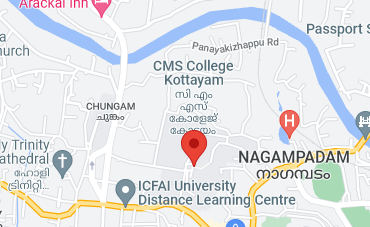Dr. Smitha S
Education
- B.Sc., MG University, 1993
- B.Ed., MG University, 1995.
- M.Sc. Botany, MG University, 1999.
- SET, 2000.
- M.A., MG University, 2002.
- Ph.D., MG University, 2017.
Area of Specialization
- Plant Taxonomy
- Horticulture
- Mushroom Cultivation
- Plant tissue culture
- Plant based value added products.
Primary area of Research :
Medicinal and Aromatic plants characterization (morphological, taxonomical, anatomical and phytochemical) and utilization of bioresources for making value added products.
Exploring the morphological, taxonomical, anatomical, and phytochemical aspects of medicinal plants provides essential insights, enabling accurate identification and a thorough comprehension of their chemical composition. This comprehensive understanding positions these plants as promising subjects for continued research and development in the field of natural medicine. Pharmacognostic studies, with a focus on useful plant parts, play a pivotal role in characterizing these plants and preventing adulteration within the medicinal plant industry. Furthermore, to safeguard rare and endangered medicinal plants, tissue culture methods are employed for their propagation, ensuring sustainable cultivation and utilization. Additionally, bioresources, such as aromatic oils, present opportunities for creating value-added products, further enhancing the potential benefits derived from these natural sources.
Plant tissue culture:
Tissue culture studies of Tylophora indica were conducted using MS basal medium supplemented with various concentrations and combinations of plant growth regulators. The outcomes were systematically recorded, and the data were subjected to
quantitative and statistical analysis.
Pharmacognostic studies:
The prevention of crude drug adulteration is facilitated through organoleptic evaluation, which involves assessing the sensory characteristics and external morphology. This method ensures the authenticity of medicinal plants by considering factors such as color, odor, taste, and overall appearance. Additionally, leaf constants, physiochemical parameters, including moisture content, ash value, and extractive values, play a crucial role in the comprehensive evaluation of medicinal plants. These
parameters provide quantitative data on the composition of the plant material, aiding in the determination of its quality and authenticity.
Extraction of starch and creation of bioplastic:
Curcuma aeruginosa rhizome starch holds great potential for therapeutic application and new ayurvedic drug formulations. Traditionally valued for its anti-inflammatory, analgesic, and antibacterial properties, the rhizome also exhibits antioxidant and anticancer effects. Utilizing rhizome starch in medicinal contexts offers a promising avenue for developing new drugs. Additionally, this starch can serve as a source of biopolymers, contributing to the production of bioplastics—a renewable and
biodegradable alternative to conventional plastics.
Ecoprinting :
Ecoprinting and dyeing, an artistic endeavor using natural colorants from plant sources, create visually stunning effects on fabric. Techniques like bundle dyeing and pounding methods employ plants as natural stencils, resulting in remarkable textures
and marks. Considerations such as dye concentration, fixation, and mordant type are vital in this process. Beyond its artistic appeal, ecoprinting on fabric presents a unique opportunity for self-employment, allowing individuals to explore vibrant colors and
nature-inspired designs in the fashion industry.
Extraction of aromatic oil:
Aromatic oil from various plant parts are utilized in making value added products such as soaps, designer candles, incense sticks , potpourri etc..
Dried flowers:
The dried flower industry stands out as a promising sector within floriculture, showcasing the potential for value-added products. Various dried parts, including leaves, fruits, and flowers from locally available plants, serve as raw materials for creating an array of enhanced products. This includes items such as wall hangings, flower arrangements, greeting cards, decorative candles, and potpourri. The utilization of dried plant materials not only adds aesthetic appeal but also offers a sustainable and creative approach to floriculture, providing diverse options for crafting unique and
decorative products.
Terrarium:
Terrariums, as miniature gardens for adornment, not only enhance aesthetics but also serve as educational tools illustrating scientific processes. These processes encompass the water cycle, involving evaporation, transpiration, and condensation, alongside depicting intraspecific interactions within the enclosed environment. Comprising various biotic and abiotic elements, the sustenance of plants within a terrarium relies on creating a suitable microenvironment. In the case of a closed terrarium, acting as a self-contained ecosystem, a transparent glass jar functions as a greenhouse, permitting sunlight entry crucial for photosynthesis. This sunlight- induced evaporation is trapped within the closed system, and the condensed water becomes available for plant absorption, establishing a self-sustaining water cycle that prevents plant dehydration. Conversely, an open terrarium resembles a layered potted plant garden, using plants adapted to dry conditions, offering a different dynamic within the microenvironment.
Current research:
Morpho-anatomical and phytochemical characterization of Alternanthera sessilis (Ponnanganni keerai) has revealed significant attributes. The leaves have been identified as effective remedies for various eye-related problems. Moreover, the plant is found to be rich in antioxidants, iron, and calcium, further enhancing its nutritional value. The exploration of theplant’s morpho-anatomical features and phytochemical composition provides valuable insights into its potential therapeutic applications and nutritional benefits.
BY1811601– Methodology of Science and an Introduction to Botany (P)
BY1812102– Microbiology, Mycology and plant pathology
BY1812602– Microbiology, Mycology and plant pathology (P)
BY1813103– Phycology and Bryology
BY1813603– Phycology and Bryology (P)
BY1814104 – Pteridology, Gymnosperms and Paleobotany
BY1814604– Pteridology, Gymnosperms and Paleobotany (P)
BY1815105– Anatomy, Reproductive Botany and Microtechnique
BY1815605 – Anatomy, Reproductive Botany and Microtechnique (P)
BY1815607– Plant physiology and Biochemistry (P)
BY1816109 – Genetics, Plant Breeding and Horticulture
BY1816609– Genetics, Plant Breeding and Horticulture (P)
BY1816111 – Angiosperm Morphology, Taxonomy and Economic botany
BY1816611 – Angiosperm Morphology, Taxonomy and Economic botany (P)
* Morpho-anatomical characterization and phytochemical analysis of Alangium salvifolium Wang. Smitha S and Namitha P Nair. International Conference on Integrated Approach for Sustainable Development Employing Scientific Input and Technological
Advancement. SAS SNDP Yogam College, Konni, Pathanamthitta, Kerala. 22-24 June 2023.
* Phytochemical characterization of the rhizome of Curcuma aeruginosa Roxb., Extraction of starch from the rhizome and its use as a potential source for making bioplastic T Kavya Raj and Smitha S. International Conference on Integrated Approach for
Sustainable Development Employing Scientific Input and Technological Advancement. SAS SNDP Yogam College, Konni, Pathanamthitta, Kerala. 22-24 June 2023.
* Ecoprinting, the designs of nature, on fabrics using natural dyes from various types of leaves and flowers Smitha S and N S Nandana. International conference on Emerging trends in plant science research, Catholicate College Pathanamthitta, Kerala. March 6-7. 2023.
* Morpho-anatomical characterization, essential oil analysis and preparation of scented candles using extracted oil from the flowers of Cananga odorata (Lam,) Hook. & Thomson.f. Smitha S and Arjun Binu. International conference on Emerging trends in plant
science research, Catholicate College Pathanamthitta, Kerala. March 6-7. 2023.
* Morpho-anatomical characterization and extraction of starch from the rhizome of Curcuma aeruginosa Roxb. Smitha S and Kavya Raj T. International conference on Emerging trends in plant science research, Catholicate College Pathanamthitta, Kerala. March 6-7. 2023.
* In Silico Screening of Phytochemicals of Tylophora indica (Burm.f.) Meril Against E protein of Omicron variant
Prisho Mariam Paul, Smitha S and Krupakar Parthasarathy. International Conference on“Translational Research on Drug Discovery and Development for Sustainable Healthcare” Sathyabama Institute of Science and Technology (Deemed to be University), Chennai, 3-5 May, 2023.
* Terrarium – A tiny ecosystem Smitha S and Pooja Ghorawat. Bioresources and commercial utilization: Trends,
market, supply chain and sustainibility, Kerala State Biodiversity Board, Thiruvananthapuram, February 2022.
* Extraction of essential oils and its application in soap making S. Smitha and V. Kavya. Proceedings of UGC sponsored National Seminar on Bioprospecting – A Quest for Natural Solutions, CMS College Kottayam, 2017.
* Phytochemical analysis and anatomical profiling of selected medicinal plants S. Smitha and B. Aryalekshmi. Proceedings of UGC sponsored National Seminar on Bioprospecting – A Quest for Natural Solutions, CMS College Kottayam, 2017.
* Micropropagation of Christia vespertilionis : A promising medicinal plant for cancer prevention Smitha S. International Conference. Towards a Sustainable Blue Economy; Production, Strategies and Policies, 2016.
* An investigation In vitro propagation of Ipomea pes-caprae (Linn.)R.Br. Smitha S. and Mini Chacko 20th Kerala Science Congress, Thiruvanathapuram. 2008.
* Regeneration of Tylophora indica (Burm.f.) Merr. from nodal segments through indirect organogenesis Smitha S. and Varghese J.P. An International Conference on Sustainable Agriculture.
CMS College, Kottayam, 2008.
Best oral presentation award and Best poster presentation award in International Conference 2023 (March 6-7) Emerging Trends in Plant Science Research held at Catholicate College, Pathanamthitta, Kerala.
Biotechnology
Department


